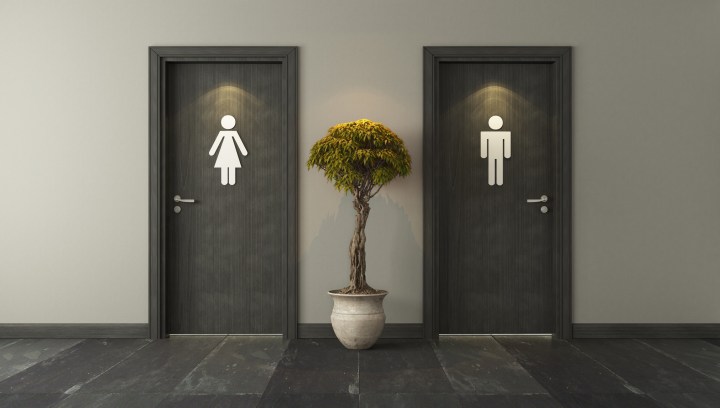WORLD TOILET DAY OP-ED
Toilet design is still stuck in Elizabethan times — we can flush with success using just one or two litres

Do we really need to use nine to 12 litres of clean, drinkable water to flush our faeces and urine into a pipe connected to a sewer? South Africa is a water‑stressed country with our water demand expected to exceed supply in around 10 years.
Despite the importance of sanitary toilets, nearly half of the global population lacks access to hygienic sanitation facilities and around 700 children under the age of five die daily from diarrhoea linked to unsafe water, sanitation and poor hygiene. The UN’s World Toilet Day on 19 November serves as a reminder to the global community to prioritise sanitation and to break the stigma associated with using the toilet.
The world uses two types of toilets; a flush toilet which uses water, and a dry toilet which uses no water. Toilets can come with a toilet seat or one that requires squatting, which is more common in Asia. The flush toilet tends to be the “gold standard” to which most users aspire. Users like the convenience of “flushing-and-forgetting” and the ability to wash the toilet bowl.
In urban city centres, these flush toilets need to be connected to sewers and a type of system that cannot be provided throughout South Africa. Laying sewers is a time-consuming, expensive and challenging task in unplanned housing settlements. Crucially, water availability and energy supply are key requirements for the functionality of the system. Developing countries often struggle with implementing this approach due to the cost for both the government and citizens.
While recognising that most people aspire to water-flushing toilets, do we really need to use nine to 12 litres of clean, drinkable water to flush our faeces and urine away? South Africa is a water‑stressed country with our water demand expected to exceed supply in around 10 years. Periodic droughts throughout the country have shown us the importance of water availability and limiting our water usage to prevent Day Zero scenarios. How would people flush their toilets when there are severe droughts and water becomes scarce?
This is why innovation is important; it brings about efficiencies.
The basic design of the flush toilet has not changed significantly over 200 years and is in desperate need of innovation to match our current realities. The modern-day flush toilet evolved from the UK and Europe with engineering principles then spreading to other continents.
Why flushing scarce water into the sea, ‘the world’s biggest toilet bowl’, makes no sense
Near the end of the 1500s, Sir John Harrington designed a flush toilet for his godmother, Queen Elizabeth I, that used a tank to flush a toilet bowl in what is considered to be the forerunner of the modern flush toilet. In the late 1700s, Alexander Cumming developed the S-shaped pipe which uses standing water to create a water seal — the water you view in the bowl when you pick up the lid — that prevents odours coming into the home from pipes. This design is still in use in modern flush toilets.
Cholera outbreaks and river pollution in the UK and Europe in the 1800s catalysed governments to sewer their cities and remove human faecal waste away from highly urbanised areas for subsequent treatment. Developing countries have followed these engineering principles but have yet to have the same success due to differences in population size and rates of urbanisation and differing climatic conditions and economic profiles.
Visit Daily Maverick’s home page for more news, analysis and investigations
This is where innovation is key. Can we not use one to two litres to flush? Do we have to use sewers to move our faeces and urine — are we not able to treat all waste on site? The Water Research Commission (WRC), together with various international and national partners, has been catalysing research into toilets for the future.
In product development that is somewhat analogous to how mobile phones disrupted landlines and accelerated access, smarter designed toilets have been designed and tested to treat all faecal waste without needing to tap into a piped line. And water can be recycled for flushing.
There are a few examples from South Africa. The Arumloo uses one to two litres per flush. Indistinguishable from a modern flush toilet, its inner-vortex toilet bowl provides a more efficient flush than a standard flush toilet. It does not need any special fittings, is available in ceramic or plastic seats and can be fitted by any qualified plumber. It has a multi-flush cistern which means you can flush more than once if water is cut off.
Similarly, the Eaziflush is another product that was commercialised through initial research and development studies from the WRC. It also uses around two litres per flush. The toilet can be installed in sewered and non-sewered areas. Initially designed for use in non-sewered areas and without a cistern — a jug of water was used to flush — newer models can be upgraded with a low-flush cistern for convenience, and includes a child seat.
A newer technology is a flushing urine diversion toilet, a design that separates urine from faeces. The user interface looks no different to that of a modern-day toilet. Separation of urine from faeces allows phosphorus compounds to be extracted from urine. Phosphate rock is a finite resource essential to plant and animal nutrition and a key ingredient in fertilisers. This design removes a significant stream of pollutants from being discharged into sewerage systems.
Here’s how we can use urine to turn the water and food crisis into an opportunity
Dysfunctional wastewater treatment plants have ineffective nutrient removal processes which result in urine nutrients ending up in river water bodies, triggering eutrophication processes in that source. Removing these nutrients and extracting value as fertilisers could go a long way towards reducing downstream pollution events.
The University of Cape Town has done extensive research into this recycling paradigm and a local toilet manufacturer has secured the licensing rights to manufacture the urine-diverting toilet in South Africa.
Recognising the need to stimulate market development for the next generation of sanitation technologies, the South African Sanitation Technology Enterprise Programme (Sastep) has successfully demonstrated recycling toilets at schools. Costed at a similar price to conventional ablution blocks, some of the demonstrated solutions have been shown to be cost-effective for schools by saving on their flushing water bill.
Sastep also aims to disrupt the belief system associated with the piped system by demonstrating an equivalent toilet experience, but with many societal and environmental benefits.
With water security becoming an increasing challenge, we wish to plan for the future by having a range of sanitation solutions available to meet our changing circumstances. DM
Dr Sudhir Pillay and Akin Akinsete work for the Water Research Commission.


















Comments - Please login in order to comment.